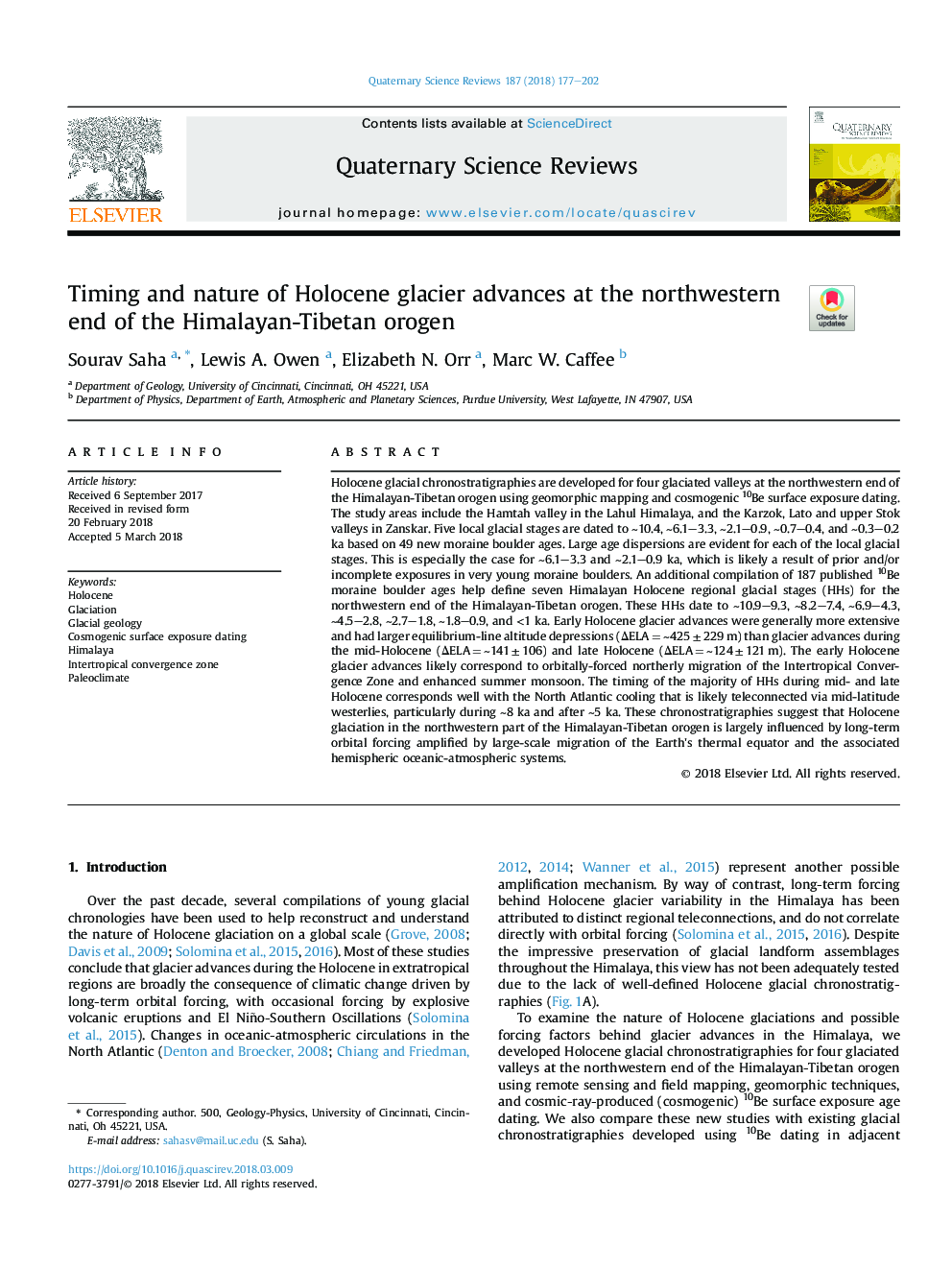| کد مقاله | کد نشریه | سال انتشار | مقاله انگلیسی | نسخه تمام متن |
|---|---|---|---|---|
| 8914867 | 1640748 | 2018 | 26 صفحه PDF | دانلود رایگان |
عنوان انگلیسی مقاله ISI
Timing and nature of Holocene glacier advances at the northwestern end of the Himalayan-Tibetan orogen
ترجمه فارسی عنوان
زمان و ماهیت یخچال هلوسن پیشرفت در انتهای شمال غربی هیمالیا-تبت
دانلود مقاله + سفارش ترجمه
دانلود مقاله ISI انگلیسی
رایگان برای ایرانیان
کلمات کلیدی
موضوعات مرتبط
مهندسی و علوم پایه
علوم زمین و سیارات
زمین شناسی
چکیده انگلیسی
Holocene glacial chronostratigraphies are developed for four glaciated valleys at the northwestern end of the Himalayan-Tibetan orogen using geomorphic mapping and cosmogenic 10Be surface exposure dating. The study areas include the Hamtah valley in the Lahul Himalaya, and the Karzok, Lato and upper Stok valleys in Zanskar. Five local glacial stages are dated to â¼10.4, â¼6.1-3.3, â¼2.1-0.9, â¼0.7-0.4, and â¼0.3-0.2 ka based on 49 new moraine boulder ages. Large age dispersions are evident for each of the local glacial stages. This is especially the case for â¼6.1-3.3 and â¼2.1-0.9 ka, which is likely a result of prior and/or incomplete exposures in very young moraine boulders. An additional compilation of 187 published 10Be moraine boulder ages help define seven Himalayan Holocene regional glacial stages (HHs) for the northwestern end of the Himalayan-Tibetan orogen. These HHs date to â¼10.9-9.3, â¼8.2-7.4, â¼6.9-4.3, â¼4.5-2.8, â¼2.7-1.8, â¼1.8-0.9, and <1 ka. Early Holocene glacier advances were generally more extensive and had larger equilibrium-line altitude depressions (ÎELAâ¯=â¯â¼425â¯Â±â¯229â¯m) than glacier advances during the mid-Holocene (ÎELAâ¯=â¯â¼141â¯Â±â¯106) and late Holocene (ÎELAâ¯=â¯â¼124â¯Â±â¯121â¯m). The early Holocene glacier advances likely correspond to orbitally-forced northerly migration of the Intertropical Convergence Zone and enhanced summer monsoon. The timing of the majority of HHs during mid- and late Holocene corresponds well with the North Atlantic cooling that is likely teleconnected via mid-latitude westerlies, particularly during â¼8 ka and after â¼5 ka. These chronostratigraphies suggest that Holocene glaciation in the northwestern part of the Himalayan-Tibetan orogen is largely influenced by long-term orbital forcing amplified by large-scale migration of the Earth's thermal equator and the associated hemispheric oceanic-atmospheric systems.
ناشر
Database: Elsevier - ScienceDirect (ساینس دایرکت)
Journal: Quaternary Science Reviews - Volume 187, 1 May 2018, Pages 177-202
Journal: Quaternary Science Reviews - Volume 187, 1 May 2018, Pages 177-202
نویسندگان
Sourav Saha, Lewis A. Owen, Elizabeth N. Orr, Marc W. Caffee,
